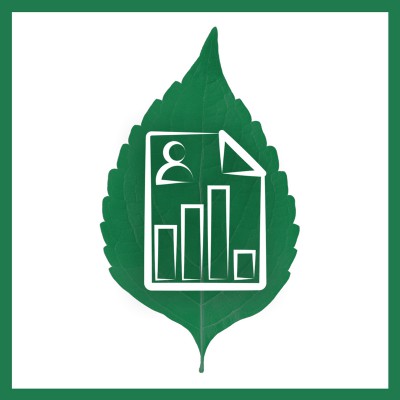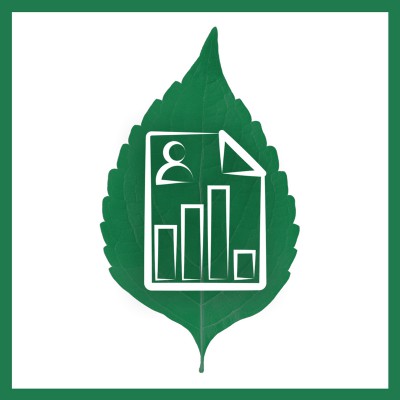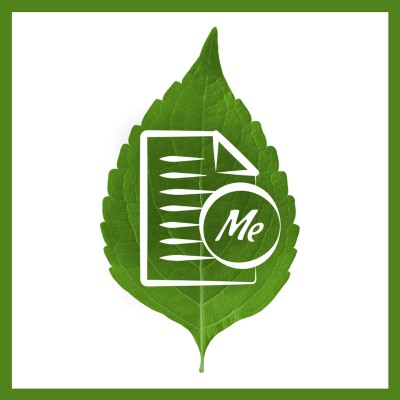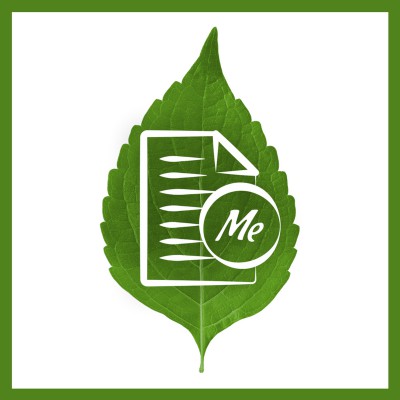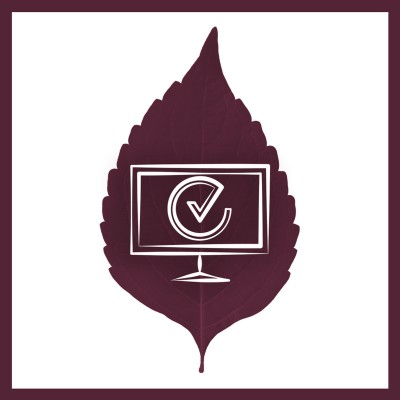 SEARCH
SEARCHNo products
Notice: Undefined index: total_noship in /var/www/prestashop/cache/smarty/compile/f8/b5/90/f8b590560ee23c0b806eb0670315623e14e8544e.file.blockcart.tpl.php on line 322
Notice: Trying to get property of non-object in /var/www/prestashop/cache/smarty/compile/f8/b5/90/f8b590560ee23c0b806eb0670315623e14e8544e.file.blockcart.tpl.php on line 322
Product successfully added to your shopping cart
There are 0 items in your cart. There is 1 item in your cart.
Authors: Jane E. Myers & Thomas J. Sweeney
The Five Factor Wellness Inventory (FFWEL) is an evidence-based tool used to assess wellness characteristics as a basis for helping individuals make choices for healthier living. Developed through structural equation modeling analysis of a large database from the Wellness Evaluation of Lifestyle (WEL), the FFWEL measures the higher order Wellness factor, 5 second-order factors and 17 discrete scales as illustrated in the Indivisible Self: An Evidence-based Model of Wellness. These scales are measured using 74 scored items and a number of experimental items, including perceived safety, perceived wellness, and context scales. Demographic items are also included.
The WEL and the FFWEL have been used to study wellness in relation to diverse psychological constructs and demographic indices. These have also been used for program evaluation.
Please note that two additional forms are included in the FFWEL Manual: FFWEL-T for adolescents with a 6th grade reading level or above, and FFWEL-E for elementary school aged children with a 3rd grade reading level or above.
Copyright © 2005, 2014 by Jane E. Myers & Thomas J. Sweeney
- Buy It
- Sample Items
- Product Specs
- Translations
- Resources
- Related Products
- Manual$50.00Includes details on reliability, validity, scoring, etc. and a review-only copy of the FFWEL forms. PDFs are not refundable.In Stock
- Individual Report: Adult Form$15.00Builds a report that interprets an individual's FFWEL Adult Form scores. You invite participants to take the survey and Transform™ generates their reports.In Stock
- Individual Report: Teen Form$15.00Builds a report that interprets an individual's FFWEL Teen Form scores. You invite participants to take the survey and Transform™ generates their reports.In Stock
- Report About Me: Adult Form$20.00Interprets and reports on your FFWEL-A2 scores. You complete the survey and Transform™ generates your report. Transform will connect this report to the "Send To" email provided at checkout. Note: This product is for a single use, with automated survey administration. For multiple uses, buy instead the Individual Report product in quantity needed.In Stock
- Report About Me: Teen Form$20.00Interprets and reports on your FFWEL-T scores. You complete the survey and Transform™ generates your report. Transform will connect this report to the "Send To" email provided at checkout. Note: This product is for a single use, with automated survey administration. For multiple uses, buy instead the Individual Report product in quantity needed.In Stock
- Group Report: Adult Form$200.00Builds a report that calculates and summarizes average FFWEL Adult Form scores for a group of participants.In Stock
- Group Report: Teen Form$200.00Builds a report that calculates and summarizes average FFWEL Teen Form scores for a group of participants.In Stock
- Transform Survey Hosting: Adult Form (Data)$2.75Minimum purchase of 20. Allows you to administer the FFWEL Adult Form as an online survey using Mind Garden's Transform™ System. Includes data collection: data file with participants' raw data and raw scale scores. Optionally, Individual Reports and Group Reports can be generated from the collected data - requires the purchase of report licenses. Customization services are available.In Stock
- Transform Survey Hosting: Teen Form (Data)$2.75Minimum purchase of 20. Allows you to administer the FFWEL Teen Form as an online survey using Mind Garden's Transform™ System. Includes data collection: data file with participants' raw data and raw scale scores. Optionally, Individual Reports and Group Reports can be generated from the collected data - requires the purchase of report licenses. Customization services are available.In Stock
- License to Administer$2.75Minimum purchase of 50. Allows you to administer the FFWEL as an online survey via a non-Mind Garden survey system or as a paper and pencil survey. The downloadable PDF file includes one copy of the FFWEL, scoring key, and permission to administer the FFWEL up to the quantity purchased. The PDF is non-refundable.In Stock
- Five Factor Wellness Inventory and Habit Change Workbook$10.00This workbook complements the Five Factor Wellness Inventory Adult Form. It is available only in PDF format for immediate download and printing.In Stock
Features of the FFWEL
Purpose: Assess characteristics of wellness as a basis for helping individuals make choices for healthier living
Length
Adult Form: 91 items
Teen Form: 97 items
Elementary Form: 94 items
Average completion time: 20-25 minutes
Target populations
Adult Form: 9th grade or above
Teen Form: 6th grade or above
Elementary Form: 3rd grade or above
Administration: For individual or group administration
Norms in Manual: Provides normative comparison of 3,343 adults and 1,142 teens
Uses of the FFWEL
- Wellness studies
- Wellness program evaluation
- Physical Health assessment and improvement
- Self-Understanding
- Mental Health assessment and management
Scales
The Five Factor Wellness Inventory measures Overall Wellness, as well as five second-order factors containing seventeen discrete scales. The scales are listed below by second-order factor.
Creative Self:
Thinking
Emotions
Control
Work
Positive Humor
Coping Self:
Leisure
Stress Management
Self Worth
Realistic Beliefs
Social Self:
Friendship
Love
Essential Self:
Spirituality
Gender Identity
Cultural Identity
Self-Care
Physical Self:
Exercise
Nutrition
The final two scales include items based on context and one item covering overall life satisfaction, respectively.
Contextual Variables:
Local Context
Institutional Context
Global Context
Chronometrical Context
Life Satisfaction Index
Available with FFWEL License to Administer:
These translations are available free of charge with your purchase of the license. Translations are provided in a separate pdf-format file. Select the language from the Translation drop-down list.
- Arabic - Adult Form only
- Czech - Adult Form only
- Indonesian - Adult Form only
- Malay
- Urdu - Adult Form only
Note: We cannot assure translation quality — many are made by individual researchers and we are not necessarily familiar with the particular language or dialect. Some of the translations are partial and typically do not have validation data. Basically, we offer whatever is available to facilitate your work.
If you are unable to find the translation you need, you can request permission to make a translation.
No translations are available for FFWEL Transform™ Survey Hosting.
Counseling for Wellness: Theory, Research, and Practice by Jane E. Myers and Thomas J. Sweeney (Editors), American Counseling Association (2005).
A key article relevant to the Five Factor Wellness Inventory is Psychometric Synthesis of the Five Factor Wellness Inventory by Laura Shannonhouse, Bradley Erford, Donna Gibson, Caroline O’Hara, and Matthew C. Fullen. Journal of Counseling & Development. January 2020 Volume 98.
Web resources include:
Wellness research
www.csi-net.org
Bigbee, A. (2008). The relationship between religion, social interest, and wellness in adults. Dissertation Abstracts International Section A: Humanities and Social Sciences, 69(7-A), 2614.
Bilot, J. (2012). The relationship between wellness and burnout among novice counselors. Dissertation Abstracts International Section A: Humanities and Social Sciences, 74(2- A)(E).
Brasfield, M. W. (2015). Wellness as a mitigating factor against burnout for public school teachers. Dissertation Abstracts International Section A: Humanities and Social Sciences, 77(2-A)(E).
Chilton, J. M., Haas, B. K., & Gosselin, K. P. (2014). The effect of a wellness program on adolescent females. Western Journal of Nursing Research, 36, 581-598.
Deaner, R. G. (2006). To what extent can the study of early recollections predict wellness for counselor education students? Dissertation Abstracts International: Section B: The Sciences and Engineering, 67(9-B), 5395.
Degges-White, S., & Myers, J. E. (2007). Transitions, subjective age, wellness, and life satisfaction: A comparison between lesbians and heterosexual women in midlife. Journal of LGBT Issues in Counseling, 1, 21-43.
Degges-White, S., Myers, J. E., Adelman, J. U., & Pastoor, D. D. (2003). Examining counseling needs of headache patients: An exploratory study of wellness and perceived stress. Journal of Mental Health Counseling, 25, 271-290. doi:10.17744/mehc.25.4.yxyewlgbmm8ufq6c
Egan, A. N. (2014). The influence of wellness and deployment on relationship satisfaction. Dissertation Abstracts International: Section B: The Sciences and Engineering, 75(10- B)(E).
Foster, T., Steen, L., O'Ryan, L., & Nelson, J. (2016). Examining how the Adlerian life tasks predict anxiety in first-year counseling students. The Journal of Individual Psychology, 72, 104-120. doi:10.1353/jip.2016.0009
Gibson, D. M., & Myers, J. E. (2006). Perceived stress, wellness, and mattering: A profile of first year Citadel cadets. Journal of College Student Development, 47, 647-660. doi:10.1353/csd.2006.0065
Gill, C. S., Barrio Minton, C. A., & Myers, J. E. (2010). Spirituality and religiosity: Factors affecting wellness among low-income, rural women. Journal of Counseling & Development, 88, 293-302. doi:10.1002/j.1556-6678.2010.tb00025.x
Gillingham, S. (2009). The relationship between multiple indicators of wellness and parental stress in foster parents. Dissertation Abstracts International: Section B: The Sciences and Engineering, 70(9-B), 5818.
Hattie, J. A., Myers, J. E., & Sweeney, T. J. (2004). A factor structure of wellness: Theory, assessment, analysis, and practice. Journal of Counseling & Development, 82, 354-365. doi:10.1002/j.1556-6678.2004.tb00321.x
Heath, W. M. (2014). A wellness profile of student-veterans at 4-year higher education institutions: The role of gender, combat tours, and deployment. Dissertation Abstracts International: Section B: The Sciences and Engineering, 76(4-B)(E).
Hollingsworth, M. A. (2010). Relationship of friends, physical education, and state test scores: Implications for school counselors. Journal of School Counseling, 8.
Jang, Y. J., Lee, J., Puig, A., & Lee, S. M. (2012). Factorial invariance and latent mean differences for the Five Factor Wellness Inventory with Korean and American counselors. Measurement and Evaluation in Counseling and Development, 45, 71-83. doi:10.1177/0748175611427915
Kahlo, D. M. (2009). The relationship between gratitude and multiple dimensions of wellness. Dissertation Abstracts International: Section B: The Sciences and Engineering, 70(10- B), 6556.
Kirchner, E. D. (2014). Occupational demographics, professional quality of life, and wellness levels among public school educators. Dissertation Abstracts International: Section B: The Sciences and Engineering, Vol 76(4-B)(E).
Lambie, G. W., Smith, H. L., & Ieva, K. P. (2009). Graduate counseling students' levels of ego development, wellness, and psychological disturbance: An exploratory investigation. Adultspan, 8, 114-127. doi:10.1002/j.2161-0029.2009.tb00064.x
Lawson, G., & Myers, J. E. (2011). Wellness, professional quality of life, and career-sustaining behaviors: What keeps us well? Journal of Counseling & Development, 89, 163-171.
Lemon, J. C., & Watson, J. C. (2011). Early identification of potential high school dropouts: An investigation of the relationship among at-risk status, wellness, perceived stress, and mattering. Journal of At-Risk Issues, 16, 17-23.
Lenz, A. S., Sangganjanavanich, V. F., Balkin, R. S., Oliver, M., & Smith, R. L. (2012). Wellness model of supervision: A comparative analysis. Counselor Education and Supervision, 51, 207-221. doi:10.1002/j.1556-6978.2012.00015.x
Lewis, T. F., & Myers, J. E. (2010). Wellness factors as predictors of alcohol use among undergraduates: Implications for prevention and intervention. Journal of College Counseling, 13, 111-125.
Lewis, T. F., & Myers, J. E. (2012). Wellness factors decrease the odds of drinking and driving among college students. Journal of Addictions & Offender Counseling, 33, 93-106. doi:10.1002/j.2161-1874.2012.00007.x
Maley, R. J. (2008). The relationship between nursing assistants' wellness and caregiver satisfaction. Dissertation Abstracts International: Section B: The Sciences and Engineering, 70(5-B), 2835.
McNeely, A. R. (2010). Differences among community college students on dimensions of wellness as measured by the 5f-wel-a. Dissertation Abstracts International: Section B: The Sciences and Engineering, 71(9-B), 5820.
Moorhead, H. J. H., Gill, C., Minton, C. A. B., & Myers, J. E. (2012). Forgive and forget? Forgiveness, personality, and wellness among counselors‐in‐training. Counseling and Values, 57, 81-95. doi:10.1002/j.2161-007X.2012.00010.x
Myers, J. E., & Degges-White, S. (2007). Aging well in an upscale retirement community: The relationships among perceived stress, mattering, and wellness. Adultspan, 6, 96-110. doi:10.1002/j.2161-0029.2007.tb00035.x
Myers, J. E., & Mobley, A. K. (2004). Wellness of undergraduates: Comparisons of traditional and nontraditional students. Journal of College Counseling, 7, 40-49. doi:10.1002/j.2161- 1882.2004.tb00258.x
Myers, J. E., Willse, J. T., & Villalba, J. A. (2011). Promoting self‐esteem in adolescents: The influence of wellness factors. Journal of Counseling & Development, 89, 28-36. doi:10.1002/j.1556-6678.2011.tb00058.x
Mynatt, B. S., Heidel, R. E., & STUDER, J. R. (2014). Bullying: A wellness concern among Appalachian youth. Journal of Humanistic Counseling, 53, 86-100. doi:10.1002/j.2161- 1939.2014.00051.x
Owens, Pamela K. (2009). Exploration Linking Self-Reported Disordered Eating and Wellness in Undergraduate Health Students. Online Submission. Morehead State University 64 pp. (ED532166)
Perepiczka, M., & Balkin, R. S. (2010). Relationship between wellness and age, matriculation, and relationship status of counselor education doctoral students. Journal of Humanistic Counseling, Education & Development. 49, 203-216.
Phillips, J. L. (2005). Holistic wellness: A study of lifestyle choices among religious adults. Dissertation Abstracts International: Section B: The Sciences and Engineering, 67(1-B), 525.
Puig, A., Baggs, A., Mixon, K., Park, Y. M., Kim, B. Y., & Lee, S. M. (2012). Relationship between job burnout and personal wellness in mental health professionals. Journal of Employment Counseling, 49, 98-109. doi:10.1002/j.2161-1920.2012.00010.x
Rachele, J. N., Cuddihy, T. F., Washington, T. L., & McPhail, S. M. (2013). Reliability of the Five Factor Wellness Inventory among male adolescents. The Journal of Individual Psychology, 69, 118-132.
Randolph, C. G. (2010). Levels of burnout and wellness: Public versus private sector counselors. Dissertation Abstracts International Section A: Humanities and Social Sciences, 71(11-A), 3899.
Reese, R. F. (2013). Ecowellness: Construction and validation of the Reese Ecowellness Inventory. Dissertation Abstracts International: Section B: The Sciences and Engineering, 74(11-B)(E).
Roach, L. F. (2005). The influence of counselor education programs on counselor wellness. Dissertation Abstracts International Section A: Humanities and Social Sciences, 66(6-A), 2117.
Shannonhouse, L., Erford, B., Gibson, D., O’Hara, C., & Fullen, M., (2020). Psychometric Synthesis of the Five Factor Wellness Inventory. Journal of Counseling & Development, 98, 94-106.
Shannonhouse, L., Myers, J., Barden, S., Clarke, P., Weimann, R., Forti, A., & Porter, M. (2014). Finding your new normal: Outcomes of a wellness-oriented psychoeducational support group for cancer survivors. Journal for Specialists in Group Work, 39(1), 3-28. doi:10.1080/01933922.2013.863257
Shurts, W. M., & Myers, J. E. (2008). An examination of liking, love styles, and wellness among emerging adults: Implications for social wellness and development. Adultspan, 7, 51-68. doi:10.1002/j.2161-0029.2008.tb00046.x
Sinclair, S. L., & Myers, J. E. (2004). The relationship between objectified body consciousness and wellness in a group of college women. Journal of College Counseling, 7, 150-161. doi:10.1002/j.2161-1882.2004.tb00246.
Smith, H. L., Robinson, E. H. III, & Young, M. E. (2007). The relationship among wellness, psychological distress, and social desirability of entering master's-level counselor trainees. Counselor Education and Supervision, 47, 96-109. doi:10.1002/j.1556- 6978.2007.tb00041.x
Smithson, K. L. (2011). The relationship among social connectedness, meaning in life, and wellness for adult women in Levinson's Mid-Life Transition Stage. Dissertation Abstracts International: Section B: The Sciences and Engineering, 73(1-B), 666.
Stalnaker-Shofner, D. M., & Manyam, S. B. (2014). The effect of a wellness intervention on the total wellness of counseling practicum graduate students. Practitioner Scholar: Journal of Counseling & Professional Psychology, 3, 48-62.
Storlie, C. A., & Smith, C. K. (2012). The effects of a wellness intervention in supervision. The Clinical Supervisor, 31, 228-239. doi:10.1080/07325223.2013.732504
Tatar, M., & Myers, J. E. (2010). Wellness of children in Israel and the United States: A preliminary examination of culture and well-being. Counselling Psychology Quarterly, 23, 17-33. doi:10.1080/09515071003718384
Underwood, N. G. (2015). Moderating factors between self-efficacy and role stressors for high school counselors. Dissertation Abstracts International Section A: Humanities and Social Sciences, 76(10-A)(E).
Villalba, J. A., & Myers, J. E. (2008). Effectiveness of wellness-based classroom guidance in elementary school settings: A pilot study. Journal of School Counseling, 6(9).
Watson, J. C., Harper, S., Ratliff, L., & Singleton, S. (2010). Holistic wellness and perceived stress: Predicting job satisfaction among beginning teachers. Research in the Schools, 17, 29-37.
Watson, J. C., & Kissinger, D. B. (2007). Athletic participation and wellness: Implications for counseling college student-athletes. Journal of College Counseling, 10, 153-162.
Watson, J. C., & Lemon, J. C. (2011). A profile of adolescent wellness: Implications for working with a help-seeking population. Journal of Humanistic Counseling, 50, 70-83. doi:10.1002/j.2161-1939.2011.tb00107.x
Wester, K. L., Trepal, H. C., & Myers, J. E. (2009). Wellness of counselor educators: An initial look. Journal of Humanistic Counseling, Education and Development, 48, 91-109.
Williams, A. M., Helm, H. M., Clemens, E. V. (2012). The effect of childhood trauma, personal wellness, supervisory working alliance, and organizational factors on vicarious traumatization. Journal of Mental Health Counseling, 34, 133-153. doi:10.17744/mehc.34.2.j3l62k872325h583
Williams, P. D. (2012). Holistic wellness factors of traditional and non-traditional community college students. ProQuest LLC, Ph.D. Dissertation, Mississippi State University. 133 pp. (ED549694).
Wirth, J. L-R. (2012). The effect of a classroom intervention on adolescent wellness, success skills, and academic performance. Dissertation Abstracts International Section A: Humanities and Social Sciences, 74(2-A)(E).
Wolf, C. P., Thompson, I. A., Thompson, E. S., & Smith-Adcock, S. (2014). Refresh your mind, rejuvenate your body, renew your spirit: A pilot wellness program for counselor education. The Journal of Individual Psychology, 70(1), 57-75. doi:10.1353/jip.2014.0001
Young, T. L., Reysen, R., Eskridge, T., & Ohrt, J. H. (2013). Personal growth groups: Measuring outcome and evaluating impact. Journal for Specialists in Group Work, 38, 52-67. doi:10.1080/01933922.2012.745915
Young, T. L., Turnage-Butterbaugh, I., Degges-White, S., & Mossing, S. (2015). Wellness among undergraduate students on academic probation: Implications for college counselors. Journal of College Counseling, 18, 222-232. doi:10.1002/jocc.12016
Assesses personality traits with a full sphere of descriptive adjectives. The ACL provides a convenient, standardized method for recording and generating meaning for personal attributes of an individual. The ACL form can be used for self or observer ratings and Transform provides self or multi-rater assessment and reporting.
Assess the level of a person's well-being in different circumstances.
A structured assessment for patient and community groups that assesses health related factors such as alcohol consumption, sunstance abuse, and depression.
The standard method for measuring cyclical perimenstrual symptoms.
The PACL is a 153-item self-report and rating measure of Theodore Millon's eight basic personality patterns for use with normal adults and counseling or psychotherapy clients.
This workbook looks at anxiety in every day life and includes strategies for decreasing daily anxiety as well as resources for further exploration.
Offers individuals a comprehensive approach to managing stress.
The premier measurement of coping: measures the thoughts and actions people use to handle stressful situations.
Helps respondents make healthy lifestyle choices based on their responses to each of the five life tasks and subtasks defined in the Wheel of Wellness. The life tasks of spirituality, self-direction, work & leisure, friendship, and love interact with a variety of life forces and global events.

 LOGIN
LOGIN  BLOG
BLOG
 CART
CART
